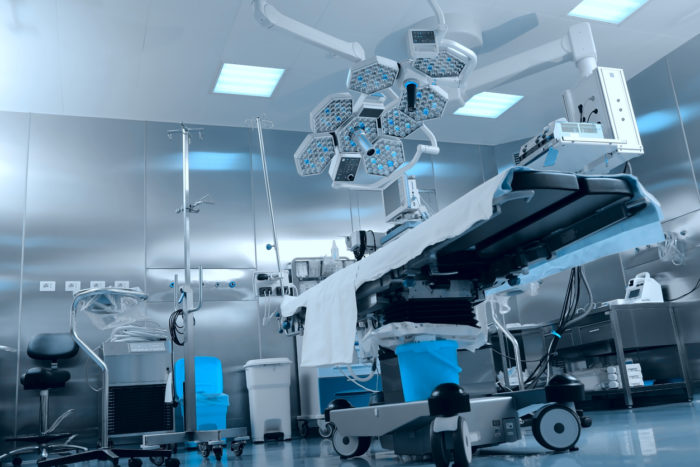Top 10 Health Technology Hazards for 2017
Clinicians, engineers, safety analysts and scientists at the ECRI Institute have released a looming list of things that could go wrong with modern medical devices and technology in the marketplace. The list, titled “Top 10 Health Technology Hazards for 2017,” was compiled from each participant’s expertise, insight and research into fatal flaws involving equipment intended to improve health and save lives. The list is intended to help hospitals reduce adverse events by making doctors and nurses aware of the dangers associated with everything from simple infusion pumps to complicated imaging systems. The institute’s Health Devices Group produces it each year.
“The list does not enumerate the most frequently reported problems or the ones associated with the most severe consequences – although we do consider such information in our analysis,” an executive brief states. “Rather, the list reflects our judgment about which risks should receive priority now.”
All 10 items on the list present problems that could be avoided through awareness, diligence and follow-up. Simple infusion pumps, which are first on the list, can be deadly if healthcare providers fail to follow the most basic of steps. The mechanisms built into the pumps have been known not to work, putting patients at risk for intravenous errors. In addition, the mechanisms have been known to be incorrectly programmed by hospital staff – and the mistake not discovered until it is too late.
“Such errors – particularly those that result in the uncontrolled flow of medication to the patient, known as “IV free flow” – can lead to patient harm and even death,” the executive brief states.
Noticing signs of damage to the pump, observing the IV tubing and paying attention to the drip chamber can avert disaster.
“Once commonplace, these simple practices are now often overlooked – perhaps because staff implicitly trust the pump’s advanced safety features,” the executive brief states.
Second on the list is the use of instruments not cleaned and end up contaminated. The result: infections in patients and / or instrument malfunction.
“Outbreaks associated with the use of contaminated duodenoscopes – such as those that caused headlines in recent years – illustrate the severity of this issue,” according to the brief. “But duodenoscopes are not the only devices that warrant attention.”
Arthroscopic shavers. Cannulated drills. Endoscopes. All are difficult to disinfect and sterilize. The issue lies with hospital staff not heeding the comprehensive set of reprocessing instructions that come with the product.
The No. 3 health-technology hazard involves ventilator alarms that go unheard. Missed alarms can kill. The institute attributes cases of missed alarms to something called alarm fatigue. The number of alarms going off on the hospital floor can desensitize staff to the point where noises literally are disregarded. Also, ventilator alarms sometimes do not sound because of faulty electronics. The devices pose a particular challenge, the institute concluded.
“Collecting and analyzing ventilator alarm data can be difficult, making it harder for hospitals to identify where their vulnerabilities lie,” according to the brief. “And the options for supplementing a ventilator’s alarms – so that the alarm can be noticed outside the patient’s room, for example – are limited. As a result, ventilators will require different methods for studying the problem and different strategies for addressing it.”
Here is the rest of the list:
- No. 4: Undetected Opioid-Induced Respiratory Depression
- No. 5: Infection Risks with Heater-Cooler Devices Used in Cardiothoracic Surgery
- No. 6: Software Management Gaps Put Patients, and Patient Data, at Risk
- No. 7: Occupational Radiation Hazards in Hybrid ORs
- No. 8: Automated Dispensing Cabinet Setup and Use Errors May Cause Medication Mishaps
- No. 9: Surgical Stapler Misuse and Malfunctions
- No. 10: Device Failures Caused by Cleaning Products and Practices
- No. 10 differs from No. 2 because the device actually does get cleaned, but the cleaning agent used is damaging or incompatible with the device. Harsh chemicals tend to break seals, damage surfaces and degrade plastic.
“Because there is no single cleaner or cleaning process that will work with all devices, hospitals must stock and use multiple cleaning products and familiarize staff with device-specific cleaning methods – tasks that pose a significant burden,” according to the brief. “Nevertheless, failure to do so can lead to ineffective cleaning (a potentially deadly circumstance), as well as excessive component breakage and premature equipment failures (which can affect patient care and be a significant financial burden).
The institute is a nonprofit based in Plymouth Meeting, Penn., whose mission is to apply research to learn about devices, drugs, processes and procedures and what works and what doesn’t. Healthcare providers take the information to staff with the goal of instilled best practices that lead to better outcomes.
Share This



